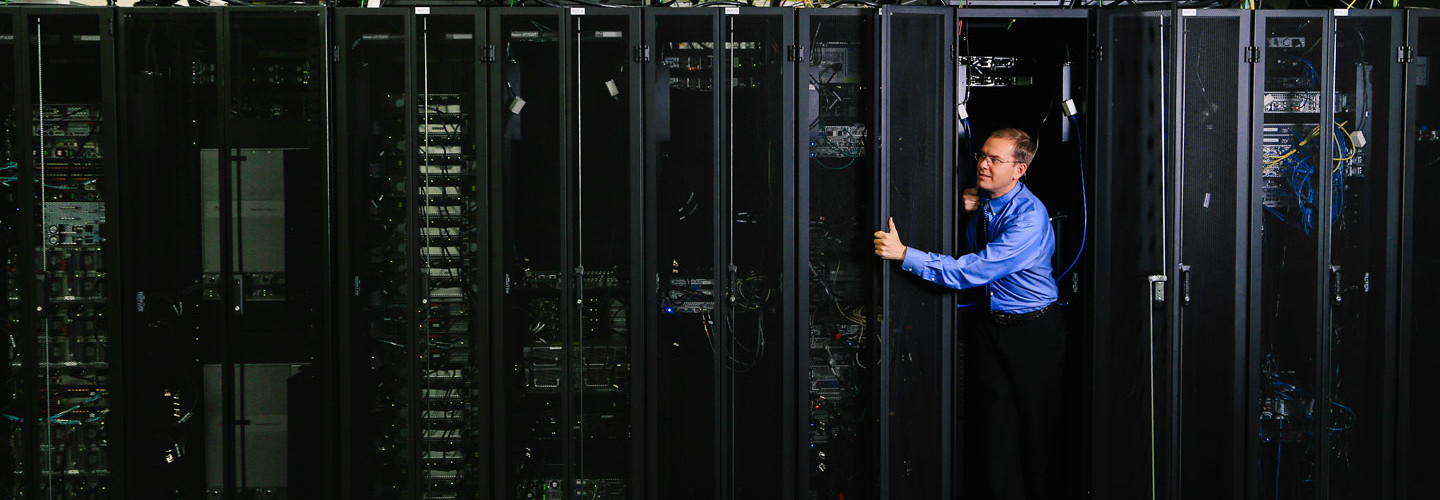Data Center Colocation Enables Agility, Efficiency
Many small colleges struggle to maintain and staff a modern data center to meet the ever-growing demands of 21st century education.
In some cases, that means constantly championing for funds to back new investments. At other times, it means going without. Chippewa Valley Technical College in Eau Claire, Wis., found a different formula, and it’s paying off not only for students and faculty, but also for other institutions throughout the state.
The college partnered with two other local institutions to build a massive, state-of-the-art data center that offers real estate to spare. Now, Chippewa Valley and WiscNet, a network services provider, offer colocation services to technical colleges, K–12 districts and area government facilities. Rather than charging clients the rates of a for-profit colocation provider, Craig Everson, Chippewa Valley’s network services manager, developed a cost-plus model. The fees are attractive to budget-conscious public-sector tenants, while offering enough margin to offset the college’s data center expenses and pay for technology improvements that benefit the college and tenants alike.
“A number of organizations in the region have data centers that no longer fully meet their needs,” Everson says. “The capital outlay to replace the centers is just cost prohibitive. We designed our facility to give customers core capabilities in a way that makes them feel like this is their data center.
How a Modern Data Center Operates
Colocation services have been a staple of the IT industry for decades. In return for predictable quarterly fees paid from operating budgets, clients meet basic data center needs for secure physical space and reliable power and cooling resources. So called “co-lo” tenants can then focus capital investments on the best servers and storage arrays their finances allow, and rent rack space in facilities like Chippewa Valley’s Regional Data Center to house them.
The data center hosts seven organizations in total, including a couple of University of Wisconsin campuses, other technical colleges, a K–12 school district and libraries. Some clients use the rented space to extend their main data centers, while others create offsite backup and disaster recovery operations. Wisconsin Indianhead Technical College (WITC) chose to move its entire production data center to the Chippewa Valley facility.
The projected size of the global colocation market in 2020, representing more than a 12 percent annual increase from 2014
SOURCE: Mordor Intelligence, “Global Data Center Colocation Market - Growth, Trends and Forecast (2015-2020),” August 2015
WITC’s former data center was housed on the first floor of a wooden building situated next to a large lake with a history of flooding the immediate area. But the college’s greater challenges resulted from several power outages that happened each year due to weather and other causes.
“We weren’t able to provide the uptime levels we wanted to for our students and our staff,” says Jim Dahlberg, WITC’s senior IT director.
Before heading down the co-lo path, WITC staff considered upgrading its campus data center. The costs didn’t add up.
“When we looked at what we’d have to do to address those issues, we decided the quality of service that Chippewa Valley could provide far outweighed what it would cost for us to make the improvements here,” says Tim Maki, technical operations manager.
In August, the college moved the six IBM x3650 rack servers that host its VMware environment along with IBM and NetApp storage area networks.
Shortly after the move, which required only a day of downtime during the summer lull, Dahlberg and Maki say their decision paid off. A power outage on the WITC campus knocked out two air conditioners in the old data center, where some legacy equipment still ran.
“We had overheating in the data center that shut down the servers that were left,” Maki says, but by then, the critical systems running at Chippewa Valley continued to deliver the services WITC relies on most.
Getting Educated on Data Centers
Before settling on the overall design, Everson and his staff toured a number of data centers, including CDW’s state-of-the-art-facility in Fitchburg, Wis. The tours informed Chippewa Valley’s decisions on everything from hot-air containment innovations to the policies that ensure a multitenant environment works for everyone.
When tenants want select staff members to have 24/7 access, the college assigns them access cards so they don’t need someone on staff to be on hand to unlock the door. Locked rack enclosures protect IT equipment from unauthorized users.
Chippewa Valley designed its 5,500-square-foot facility with modularity in mind: Twenty-four racks support the current client roster and local data center needs, which include Cisco Systems Unified Computing System enclosures and blade servers, along with 250 terabytes of storage provided by Pure Storage and NetApp. As co-lo demand increases, Chippewa Valley can accommodate two more 24-rack buildouts.
Today, 240 strands of networking fiber running over three separate paths give clients a range of performance options.
“The speed, as well as the availability and redundancy associated with fiber networks, are capabilities most clients can’t afford on their own,” Everson says.
Reliability extends to other areas. Chippewa Valley runs redundant power supplies to each rack. Primary cooling comes from an above-rack system that can be backed up by a computer-room air conditioner (or CRAC unit) in emergencies, along with a 30-ton, roof-mounted air handler.
“If the data center gets to 86 degrees, the air handler begins dumping cold air into the facility,” Everson says.
The primary cooling system operates so efficiently that the college can keep ambient temperature at a relatively toasty 83 degrees, much higher than the 65 degrees typical in data centers. Higher temperatures pay off in lower cooling bills, which help to keep costs low for tenants.
A modern approach to the venerable co-lo model means that Chippewa Valley can cash in on the IT team’s impressive technical expertise and share the wealth with other institutions that can use them.








